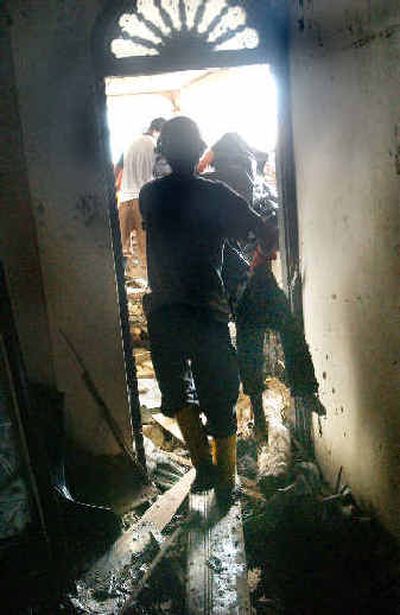Tsunami death toll could hit 270,000

BANDA ACEH, Indonesia – An official document posted here says that nearly 210,000 people in Indonesia are dead or missing from the Dec. 26 tsunami, a death toll that appears to be far higher than officials have reported publicly. Rescue workers think even that number may be low.
The larger Indonesia toll would bring the total of dead and missing from the tidal surge across the Indian Ocean to nearly 272,000, ranking the tsunami as the fifth or sixth deadliest natural disaster in about 250 years.
The new death toll came as Indonesian officials restricted the movements of foreign relief workers, U.N. employees and journalists in devastated north Sumatra, the Indonesian island that took the brunt of the tsunami’s force, and said foreign military units would be allowed to work in the country for only a limited time.
Indonesia’s vice president told the United States and other nations that have sent troops to deliver relief that their forces won’t be permitted to remain in Sumatra longer than three months, and should leave as soon as their work is completed.
The chief of operations for the government’s disaster-relief efforts here, Budi Atmadi Adiputro, said in a statement that it was “necessary” for all foreigners in Aceh province, at the northern end of Sumatra, to provide authorities with details of “their current and planned activities as well as the exact locations those activities will be carried out.”
The blunt comments seemed to end what had been tacit Indonesian acceptance of a foreign presence in an area that has been off limits to foreigners for years. But it wasn’t clear that the comments would have any real impact on rescue efforts.
Few civilian relief workers seemed concerned that the restrictions would hurt their missions, and Indonesian officials promised quick approval for missions outside of Aceh’s principal cities.
U.S. aircraft continued to fly relief missions, though helicopters from the aircraft carrier Abraham Lincoln had to refuel elsewhere after the Lincoln moved out of Indonesian waters after the Indonesian government refused permission for U.S. training flights over its territory.
Indonesian officials offered no explanation for the sharp rise in the number of dead and missing. Earlier this week, a Cabinet-level official put the toll in Aceh province at about 108,000, between those already buried and those known to be dead. Another 48,000 were missing, the official said.
But a chart posted at the entrance to the federal disaster-relief headquarters here offered different numbers.
Compiled by the Disaster Management Task Force for Aceh province, the document listed numbers of casualties by district in a variety of categories, including buried, known dead and missing.
The document gave the number of people known to have died in the disaster at 78,395 and said another 131,479 remained lost or missing.
Those returning from the field said they weren’t surprised by the new numbers. Dr. A. John Watson, the president of CARE Canada, cited the town of Calang, halfway between the provincial capital of Banda Aceh and Meulaboh, which is on the western coast, as “a really hard-hit case. Eight or nine thousand people in that town were wiped out. About 1,000 survived.” He said he expected the final death toll to be “significantly higher.”
The precise death toll is unlikely ever to be known. Thousands of people were washed to sea, and their bodies probably never will be recovered.
But the new figures rank the tsunami in the same category as a 1976 earthquake in China that killed at least 255,000 people. The worst natural disaster since 1750 is thought to have been a flood in China in 1939 that killed an estimated 3.7 million people.
The travel restrictions announced Wednesday apply to all foreigners, including “individuals, country representatives, United Nations agencies, NGOs (nongovernmental organizations), or media in Aceh province,” the government statement said.
The government said it acted out of concern that insurgents of the Free Aceh Movement might undertake violent acts and said military escorts would be provided in certain cases.
But aid workers said authorities might fear that relief groups or journalists would help the insurgents, who’ve been fighting for independence for the province since 1976.